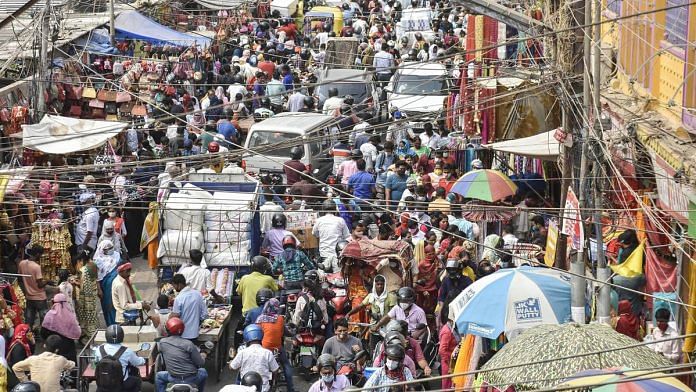Bengaluru: There has been an increase in life expectancy across the globe, according to the World Health Statistics 2021. But, a prolonged life doesn’t always translate to a healthy one.
According to the World Health Statistics report, which was released last month, the global average life expectancy was at 73.3 years, while the healthy life expectancy figures stood at 63.7 years in 2019.
While life expectancy (LE) reflects the overall mortality level of a population, healthy life expectancy (HALE) is the average number of years that a person can expect to live in full health.
In India, life expectancy was at 70.8 years, and healthy life expectancy was at 60.3 years.
The data indicated that in India, while LE in women was 2.7 years higher than men, the former only had an advantage of 0.1 years when it came to HALE.
“India is among the countries with the least difference in healthy life expectancy between men and women,” Poonam Muttreja, executive director of the Population Foundation of India, an NGO, told ThePrint. “Indian women’s life expectancy is on average 2.7 years longer than Indian men; however, the male-female difference in healthy life expectancy is just 0.1 years, showing that women in India do not necessarily lead healthier lives.”
As reported earlier, the gender-specific data also showed that across the world, while women lived longer, they didn’t necessarily have healthier lives.
According to the report, while the average life expectancy for males “was consistently around 5 years” lower than the females, the healthy life expectancy for males was 2.4 year lower than females.
Also read: Covid-19 could cause drop in life expectancy by 1-9 years across the world, study finds
What the data says
The report makes a clear distinction between life expectancy and healthy life expectancy.
Arokiasamy of the Mumbai-based International Institute of Population Science (IIPS) explained that the healthy life expectancy is adjusted for “functional disabilities”.
“Usually if we live longer, there are functional disabilities like arthritis etc … WHO is trying to push the governments to take up this metric and many European countries are trying to narrow this gap,” he said.
According to the data, in Pakistan, for instance, where the overall life expectancy stood at 65.6 years, health life expectancy was at 56.9. And while the LE was higher among women by 2.1 years in the country, HALE was higher among men by 0.1 years.
In Bangladesh too, while overall LE was 74.3 years, HALE was 64. The LE for men was 2.6 years lower than women and HALE was only 0.2 years lower.
The United States also saw the advantage women had in terms of life expectancy significantly decreasing when it came to healthy life expectancy — while women live 4.4 years longer, the health life expectancy was only 1.8 years more.
Bolivia, India, Liberia, Bangladesh and the Netherlands are among the countries where the gap between men and women in terms of healthy life expectancy is the smallest. In countries like Switzerland, Norway and France and Sweden, which have the highest life expectancy, the gap is very slim in health life expectancy when compared to life expectancy.
What experts say
Experts ThePrint spoke to highlighted that the reason why life expectancy doesn’t always translate to healthy life expectancy is lack of access to healthcare for women.
“There are several reasons for this disparity, including women’s lack of access and decision-making about their health and bodily autonomy,” Muttreja said. “Social norms and women’s status in society influence women’s interactions with the health systems and health providers.”
“Women live longer … but the onset of chronic diseases like hypertension takes place in the age group of 45-55 years. In a way, there’s a high burden of chronic diseases… Also, many of the women become widowed after the age of 60 years because men die early … the proportion of older women living alone is also higher,” said P. Arokiasamy.
(Edited by Arun Prashanth)
Also read: New research says humans have a natural life expectancy of 38 years



